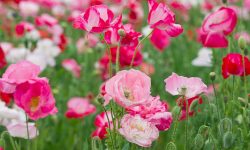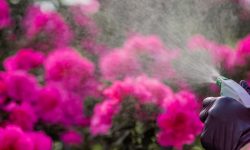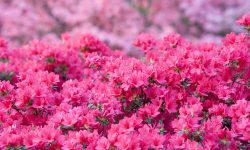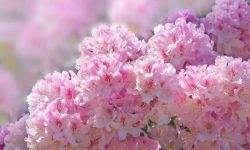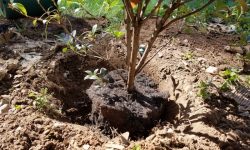Few plants can match the radiant charm and resilience of salvia. With its vibrant blooms, aromatic foliage, and ability to thrive even in challenging conditions, salvia has become a garden favorite for those seeking beauty that lasts. Whether you’re drawn to its hummingbird appeal or its drought-tolerant nature, salvia offers more than just fleeting color—it promises a lasting presence.
But is salvia a perennial, or will it vanish after a single season? The answer depends on the variety and your climate. In this guide, we’ll explore how to grow salvia for year-after-year color, share expert care tips, and help you build a garden that returns stronger and brighter each season.
Understanding the Lifespan of Salvia Plants
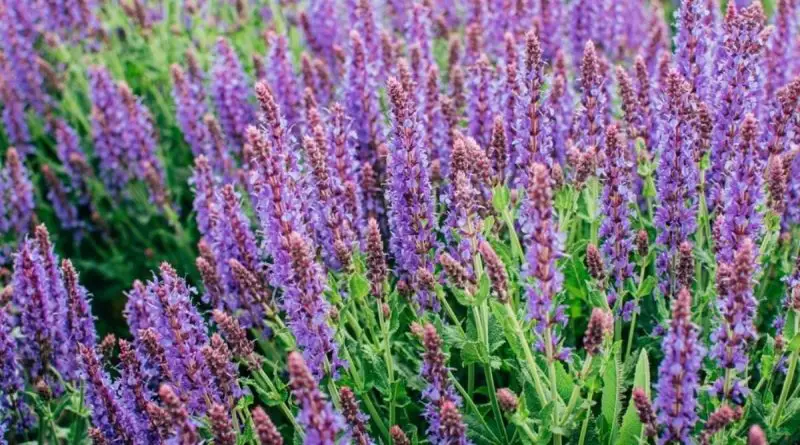
The Different Types of Salvias
Salvia is a remarkably diverse genus that includes over 900 species, ranging from small herbaceous perennials to large woody shrubs. Many are cultivated for their striking floral displays, while others are prized for their culinary or medicinal uses. Common varieties like Salvia nemorosa, Salvia greggii, Salvia guaranitica, and Salvia officinalis each bring something unique to the garden, whether it’s long-lasting blooms, aromatic foliage, or usefulness in the kitchen or apothecary.
Perennial vs. Annual Salvias
Salvias can be grouped into true perennials, tender perennials, and annuals, depending on their ability to survive winter conditions. True perennials, such as Salvia nemorosa, thrive in USDA zones 4 to 8 and reliably return each year. Tender perennials like Salvia guaranitica or Salvia leucantha behave as annuals in cold zones but act as perennials in warmer areas such as zones 8 to 11. Meanwhile, annual types like Salvia splendens grow quickly, flower abundantly, and complete their life cycle in just one growing season, offering vibrant color for a single summer.
How Climate Influences Salvia’s Perennial Status
The climate and USDA hardiness zone where you live have a direct impact on whether your salvia plants will return each year or need to be replanted. In mild climates with minimal frost, many salvias—especially tender perennials—can survive the winter and continue growing for multiple seasons. In colder zones, frost can damage or kill roots that are not hardy enough, turning some perennial varieties into annuals unless they are protected or overwintered indoors. Understanding your regional conditions is key to growing salvia successfully and choosing varieties that match your local climate.
Choosing the Right Salvia for Your Garden
Considering Your USDA Hardiness Zone
The first step in choosing the right salvia for your garden is understanding your USDA hardiness zone, as this determines whether a specific variety will behave as a perennial or an annual in your region. For instance, areas with mild winters, such as zones 8 to 11, can support tender perennial varieties like Salvia guaranitica or Salvia leucantha year-round, while colder regions in zones 4 to 7 require hardy selections like Salvia nemorosa or Salvia sylvestris that can reliably return each spring without needing to be overwintered indoors. Choosing a salvia that matches your climate ensures healthy growth and consistent blooms from year to year.
Matching Bloom Time to Garden Needs
Bloom time is another key factor when selecting salvia, as different varieties flower at different times throughout the growing season. Some, such as Salvia nemorosa, bloom in late spring to early summer, while others like Salvia guaranitica continue blooming from midsummer well into the fall. By mixing varieties with staggered bloom times, you can keep your garden vibrant for months on end, while also providing a continuous food source for pollinators such as bees, butterflies, and hummingbirds, which are naturally drawn to salvia’s nectar-rich flowers.
Evaluating Size and Growth Habit
Salvias differ widely in size and growth habit. Some, like Salvia farinacea, stay under 18 inches tall. Others, such as Salvia ‘Amistad,’ can grow over 4 feet. It’s important to think about how each type fits your garden design. Smaller salvias are great for borders, containers, or front-of-bed accents. Taller varieties work well as focal points or to add height in layered plantings. Knowing each plant’s growth habit helps create a balanced, attractive garden.
Factoring in Foliage and Fragrance
Beyond their beautiful blooms, many salvias also offer attractive foliage and delightful scents that add depth and sensory appeal to your garden. For example, Salvia officinalis, also known as common sage, has soft, silvery leaves with a pungent herbal aroma, while Salvia elegans, or pineapple sage, releases a fruity, pineapple-like scent when its leaves are gently crushed. Depending on your design goals and sensory preferences, you can select varieties that not only look stunning but also contribute unique fragrances and textures to the garden environment, making your outdoor space even more inviting.
How to Plant and Grow Perennial Salvias Successfully
Ideal Soil and Location
Perennial salvias thrive in well-drained soil that is light and moderately fertile. While they are adaptable to different soil types, they perform best in loamy or sandy soils that don’t retain excessive moisture. A full-sun location—receiving at least six to eight hours of direct sunlight per day—is crucial for encouraging vigorous blooming and healthy foliage. In overly shaded spots, salvias may grow leggy and flower poorly. If your garden soil is heavy clay or prone to water retention, amend it with compost, coarse sand, or perlite to improve drainage before planting. Raised beds and containers are also great options in such conditions.
When and How to Plant
The ideal time to plant perennial salvias is in early spring after the last frost or in early fall when temperatures begin to cool, allowing roots to establish before the next growing season. To plant, dig a hole twice as wide and slightly deeper than the root ball. Loosen the soil at the base and sides of the hole to promote root expansion. Gently remove the salvia from its container, place it at the same depth it was growing previously, and backfill with soil. Press the soil firmly around the base and water thoroughly to eliminate air pockets. Apply a light layer of organic mulch—such as shredded bark or straw—around the base to help conserve moisture, moderate soil temperature, and reduce weed growth. Keep the mulch a few inches away from the crown to prevent rot.
Watering and Fertilizing Needs
Newly planted salvias require consistent moisture to establish strong roots, but once settled, they become remarkably drought-tolerant. Water deeply once or twice a week during dry spells, allowing the soil to dry slightly between waterings. This encourages deeper root systems and reduces the risk of fungal diseases. Avoid shallow, frequent watering, especially in heavy soils, which can lead to root rot. As for feeding, salvias are not heavy feeders. In early spring, apply a balanced, slow-release fertilizer or a thin layer of compost to promote strong growth and abundant flowering. Avoid high-nitrogen fertilizers, which may result in lush foliage at the expense of blooms. Over-fertilizing can also reduce the aromatic oils in some salvia varieties, diminishing their fragrance and pollinator appeal.
Seasonal Salvia Care for Lasting Color
Spring Care
As temperatures rise and new growth begins, start by cutting back any dead, damaged, or woody stems to encourage fresh shoots. This pruning helps the plant focus energy on producing healthy foliage and abundant flowers. After pruning, apply a layer of compost or organic fertilizer around the base to replenish nutrients lost during winter. If your salvias have become crowded or overgrown, early spring is the best time to divide and transplant them for improved air circulation and vigor. Keep an eye on emerging pests and diseases, treating them promptly to protect young growth.
Summer Maintenance
During the warm months, salvias require regular attention to maintain continuous blooming. Remove spent flowers frequently by deadheading to prevent seed formation and stimulate new bud development. Water deeply but less often, aiming for moist soil without waterlogging; this encourages deep root growth and drought resilience. Monitor plants closely for pests such as aphids, spider mites, or whiteflies, which can multiply quickly in hot weather. Use organic treatments if infestations appear, and ensure good airflow around plants to reduce disease risk. If stems become too tall or floppy, light pruning or staking can keep the plant upright and attractive.
Fall Pruning and Protection
Once blooming slows or the first frost occurs, begin preparing salvias for dormancy. Cut back herbaceous perennials to a few inches above ground level to tidy the bed and promote healthy regrowth in spring. For woody or semi-woody varieties, prune lightly to shape but avoid removing too much live wood, which can reduce winter hardiness. In colder regions, apply a thick layer of mulch such as shredded leaves, straw, or bark chips around the plant base to insulate roots against freezing temperatures. Remove any fallen debris from the planting area to prevent fungal diseases and pests from overwintering nearby. In milder climates, minimal pruning and mulch are sufficient to protect salvias through the winter months.
Common Growing Mistakes to Avoid
Overwatering and Poor Drainage
Salvias are drought-tolerant by nature and struggle when their roots sit in soggy soil. Overwatering not only deprives the roots of oxygen but also encourages fungal diseases and root rot, which can quickly destroy the plant. A common error is assuming salvias need frequent watering, especially after establishment. Instead, water deeply but infrequently, allowing the soil to dry out between waterings. To improve drainage, plant salvias in raised beds or amend heavy clay soils with sand, gravel, or organic matter. Avoid planting in areas that collect water during rain, as these spots will hold moisture and stress the plant over time.
Ignoring the Need for Pruning
Pruning is essential for keeping salvias full, healthy, and continuously blooming. Many gardeners neglect this task, leading to leggy growth, woody stems, and fewer flowers. Without regular trimming, salvias can become unsightly and lose their compact form. Make it a habit to deadhead spent blooms throughout the growing season. At the end of the bloom cycle or in early spring, cut back the plant to promote lush new growth and a more rounded shape. For long-blooming varieties, a mid-season shearing can also rejuvenate the plant and trigger a second flush of flowers.
Planting in Too Much Shade
Sunlight is crucial for salvia’s success. While some varieties may tolerate light shade, most salvia species require at least six to eight hours of direct sunlight each day to produce abundant blooms and maintain strong stems. Planting them in overly shaded areas often results in reduced flowering, dull foliage, and spindly, weak growth. When placed in the wrong spot, salvias expend more energy reaching for light rather than producing flowers. For best results, choose a sunny location with good air circulation, and avoid competition from large trees or shrubs that may cast shade over time.
Dividing and Rejuvenating Mature Plants
When to Divide Salvias
Perennial salvias benefit from being divided every three to four years, especially when they start to show signs of overcrowding or reduced flowering. The ideal time to divide them is in early spring, just as the first flush of new growth appears, ensuring the plants have the entire growing season to establish strong roots. Dividing at this stage minimizes transplant shock and takes advantage of the plant’s natural growth momentum. In warmer climates, fall can also be an option, but be sure to complete the process at least six weeks before the first expected frost to allow roots to settle in.
How to Divide and Replant
To divide salvias successfully, begin by digging up the entire plant carefully, preserving as much of the root system as possible. Shake off or wash away excess soil so you can clearly see the root structure. Use a clean spade, knife, or simply your hands to separate the clump into smaller, healthy divisions, ensuring each section contains several shoots and a solid mass of roots. Discard any dead or diseased parts. Replant the divisions promptly in nutrient-rich, well-drained soil at the same depth they were growing before. Water thoroughly after planting to eliminate air pockets around the roots, and keep the soil lightly moist until the new plants are established. Applying mulch can help retain moisture and suppress weeds during this recovery period.
Encouraging Wildlife with Salvia Blooms
Salvia blooms attract many beneficial wildlife, especially pollinators like bees, butterflies, and hummingbirds. Their bright colors and tubular shapes suit long-tongued species that access deep nectar. Planting different salvias with staggered bloom times provides food from spring to fall, supporting pollinators all season. Grouping salvias in clusters helps pollinators find flowers easily and creates a beautiful display. Native or local salvia varieties usually offer more nectar and attract more wildlife. Avoid using synthetic pesticides, and add a shallow water source to encourage visits. Salvia gardens bring vibrant color and support a healthy ecosystem.
Using Salvias Beyond the Garden
Salvias offer value far beyond their role as garden ornamentals. Many varieties—particularly Salvia officinalis, also known as common sage—have culinary and medicinal uses. In the kitchen, sage leaves can flavor meats, soups, and stews, adding a rich, earthy aroma. Dried leaves are often used in herbal teas that may help with digestion and sore throats.
Culturally and spiritually, certain salvias like white sage (Salvia apiana) have been used in smudging rituals to purify spaces and promote mental clarity. In aromatherapy, salvia essential oils are valued for their calming and uplifting properties.
In floral design, salvias with long-lasting blooms and aromatic foliage can be cut and used in fresh arrangements or dried bouquets. Their spiky forms and bold colors add structure and texture to floral displays.
Whether for health, culture, or creativity, salvias bring beauty and usefulness into homes, kitchens, and traditions well beyond the garden gate.
Troubleshooting Pests and Diseases
Common Insects
Although salvias are typically pest-resistant, some insect issues can still arise—especially in warm or crowded garden conditions. Aphids cluster around tender new growth and flower buds, sucking sap and distorting leaves. Whiteflies may congregate on the undersides of leaves and scatter in a white cloud when disturbed. Spider mites, almost invisible to the naked eye, cause fine webbing and stippling on foliage. Regular inspection helps catch infestations early. To manage them, use a strong jet of water to dislodge insects, apply neem oil or insecticidal soap, and encourage beneficial insects like ladybugs and lacewings.
Fungal Issues
Fungal diseases such as powdery mildew, downy mildew, and root rot can impact salvia health—especially in damp, poorly ventilated areas. Powdery mildew appears as a white coating on leaves, often under humid conditions. Root rot, usually caused by overwatering or compacted soil, can result in wilting, blackened roots, and plant collapse. Prevent issues by spacing plants for airflow, watering at the base in the morning, and improving drainage with compost or sand. In persistent cases, fungicidal sprays or soil amendments may be necessary.
Signs of Stress
When salvias show signs of stress—such as yellowing, drooping, or stunted growth—it’s often due to environmental imbalances. Overwatering, underwatering, or poorly draining soil can all interfere with root function. Nutrient deficiencies, particularly nitrogen or phosphorus, can limit growth and reduce flowering. Salvia also reacts negatively to transplant shock or sudden temperature changes. Check the roots for rot, assess soil moisture with your fingers, and use a balanced fertilizer if deficiencies are suspected. Timely adjustments often restore the plant to full vigor.
Long-Term Maintenance for Healthy Plants
Rejuvenating with Pruning
Pruning is essential for maintaining the long-term health and aesthetic appeal of salvia plants. In early spring, once the danger of frost has passed, prune back woody or dead stems to just above new growth or a healthy set of buds. This encourages fuller branching and stimulates vigorous growth. For repeat bloomers, a light trim after the first wave of flowers in mid-summer can trigger a fresh bloom cycle. Removing spent flower stalks also keeps the plant tidy and prevents energy from going into seed production. In colder climates, wait until spring to cut back stems to protect the crown during winter.
Soil Amendments and Mulching
Nutrient-rich soil is key to thriving salvias. Each year, apply a layer of compost or well-rotted manure around the base of the plants to enrich the soil and improve structure. This supports strong root systems and consistent flowering. Replenish mulch in spring or early summer with 2–3 inches of organic material like bark chips, shredded leaves, or straw. Mulching regulates soil temperature, retains moisture during dry periods, and reduces weed competition. Be careful not to pile mulch against the stems to avoid rot.
Replacing Aging Plants
Even with ideal care, salvias can become woody or sparse after 3–5 years, particularly in heavy soils or harsh climates. When plants begin to produce fewer blooms or develop dead centers, it may be time to rejuvenate the bed. You can divide hardy perennial types in early spring or fall by digging up and separating the healthy outer portions from the older center. Alternatively, start new plants from cuttings or seeds to refresh the planting area. Regularly introducing young plants helps maintain continuous color and prevents gaps in your garden design.
FAQ About Growing and Caring for Salvias
How often should I water salvias to keep them healthy?
Salvias prefer well-drained soil and are moderately drought-tolerant once established. During the first growing season, water deeply once or twice a week to help roots develop. After that, reduce frequency, especially for drought-hardy varieties. In hot or windy weather, container-grown salvias may need more frequent watering. Always let the top inch of soil dry out before watering again to prevent root rot.
When is the best time to prune salvias for better blooming?
The ideal time to prune salvias depends on the type. For herbaceous perennial varieties, prune hard in early spring to remove old, woody growth and encourage fresh shoots. For shrubby types, such as Salvia greggii or Salvia microphylla, light pruning in early spring followed by shaping after the first bloom in summer helps maintain form and promotes repeat flowering. Always remove faded blooms throughout the season to extend the flowering period.
What type of fertilizer should I use for salvias?
Salvias are not heavy feeders, but they benefit from a light application of balanced fertilizer in early spring, such as a 10-10-10 or 5-10-5 blend. Avoid excessive nitrogen, as it can lead to lush foliage with fewer flowers. Organic options like compost or worm castings also work well and support long-term soil health. For container-grown salvias, a monthly feed with a diluted liquid fertilizer during the growing season boosts performance.
Can salvias survive winter in cold climates?
Some salvia species are hardy in USDA Zones 4–7, while others are tender perennials or annuals. To help hardy salvias overwinter, mulch the base with 2–3 inches of straw or leaves after the ground freezes to protect roots from temperature swings. Avoid pruning in fall, as old growth provides insulation. In colder regions, treat tender salvias as annuals or overwinter them indoors in pots placed in a sunny window or cool, bright space.
Why are my salvia plants not blooming?
Several factors can cause salvias to underperform. Too much shade, excess nitrogen, or lack of pruning are common issues. Ensure your plants receive at least 6 hours of direct sunlight daily and grow in well-draining soil. Deadhead spent flowers regularly to encourage new buds. If the plant is mature and still won’t bloom, consider dividing and replanting it in fresh soil, especially if it’s become root-bound or woody.
Conclusion
So, is salvia a perennial? In many cases, yes—but it depends on the type and where you live. With the right care, perennial salvias can reward gardeners with brilliant blooms year after year. By choosing the right varieties, providing well-drained soil and full sun, pruning regularly, and protecting them through seasonal changes, you can enjoy the long-term beauty and benefits of salvia in your garden.
Whether you’re aiming to brighten up a border, attract pollinators, or harvest fragrant foliage, salvia proves itself as a resilient, vibrant, and worthwhile plant that more than earns its place in any perennial bed.

